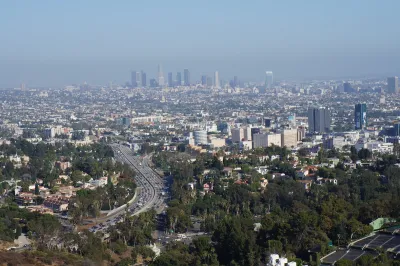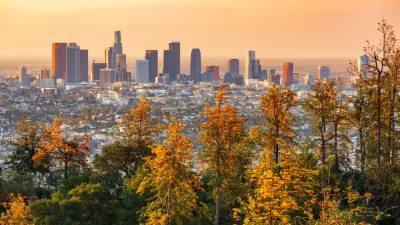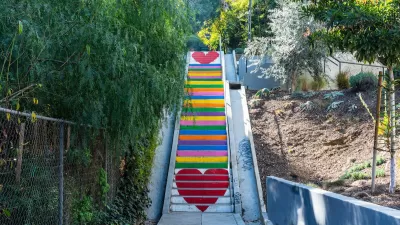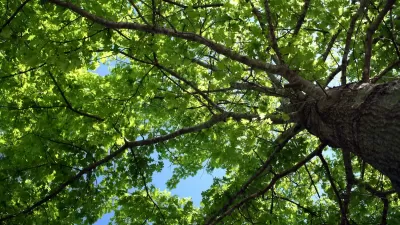A new USC study finds that relaxing Los Angeles’ outdated tree planting guidelines could significantly expand urban tree canopy and reduce shade disparities in lower-income neighborhoods, though infrastructure investments are also needed.

A new study by USC Dornsife’s Spatial Sciences Institute and Public Exchange reveals that Los Angeles’ strict and outdated tree planting rules are contributing to urban heat disparities, especially in under-resourced areas like Boyle Heights. These rules, originally created to protect infrastructure and public safety, are now limiting tree growth and widening the city’s “shade gap.” The researchers found that most of these restrictions are not codified in law but exist as internal city guidelines, which could be revised more easily to allow for more trees without compromising safety.
To explore the impact of looser planting regulations, the research team compared tree-planting capacity in Boyle Heights and Studio City. Though both areas share similar physical characteristics, Studio City has significantly more trees. Using mapping software and modeling more flexible guidelines seen in other California cities, the study found that Boyle Heights’ potential tree coverage could increase by 26 percent. However, narrow sidewalks and existing infrastructure still limit the types of trees that can be planted, with fewer large-canopy trees feasible in denser, lower-income neighborhoods.
The study also highlights how even small changes to planting guidelines — such as relaxing spacing around intersections, utility poles, and driveways — can significantly expand tree canopy in constrained areas. Since many of L.A.’s current rules are already widely violated without evident safety issues, researchers argue that updating internal guidelines is both practical and impactful. Still, to fully close the shade gap, broader infrastructure investments — like narrowing roads to create planting space — will be necessary. This research underscores the importance of rethinking urban forestry practices as a strategy for climate resilience and environmental justice.
FULL STORY: How changing L.A.’s tree rules could cool more neighborhoods

Study: Maui’s Plan to Convert Vacation Rentals to Long-Term Housing Could Cause Nearly $1 Billion Economic Loss
The plan would reduce visitor accommodation by 25,% resulting in 1,900 jobs lost.

North Texas Transit Leaders Tout Benefits of TOD for Growing Region
At a summit focused on transit-oriented development, policymakers discussed how North Texas’ expanded light rail system can serve as a tool for economic growth.

Using Old Oil and Gas Wells for Green Energy Storage
Penn State researchers have found that repurposing abandoned oil and gas wells for geothermal-assisted compressed-air energy storage can boost efficiency, reduce environmental risks, and support clean energy and job transitions.

Private Donations Propel Early Restoration of Palisades Playground
Los Angeles has secured over $1.3 million in private funding to restore the Pacific Palisades playground months ahead of schedule, creating a modern, accessible space that supports community healing after recent wildfires.

From Blight to Benefit: Early Results From California’s Equitable Cleanup Program
The Equitable Community Revitalization Grant (ECRG) program is reshaping brownfield redevelopment by prioritizing projects in low-income and environmental justice communities, emphasizing equity, transparency, and community benefits.

Planting Relief: Tackling Las Vegas Heat One Tree at a Time
Nevada Plants, a Las Vegas-based nonprofit, is combating the city’s extreme urban heat by giving away trees to residents in underserved neighborhoods, promoting shade, sustainability, and community health.
Urban Design for Planners 1: Software Tools
This six-course series explores essential urban design concepts using open source software and equips planners with the tools they need to participate fully in the urban design process.
Planning for Universal Design
Learn the tools for implementing Universal Design in planning regulations.
Ascent Environmental
Borough of Carlisle
Institute for Housing and Urban Development Studies (IHS)
City of Grandview
Harvard GSD Executive Education
Toledo-Lucas County Plan Commissions
Salt Lake City
NYU Wagner Graduate School of Public Service





























